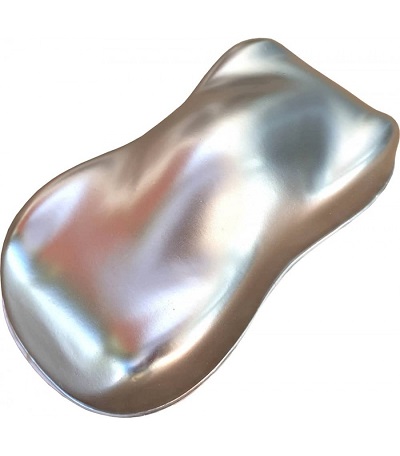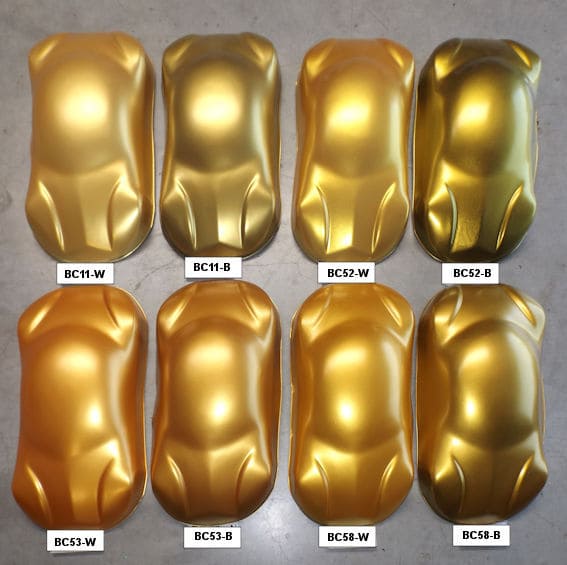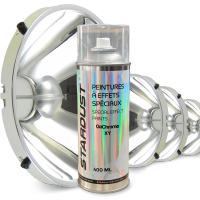All Products are in stock
and shipped from France.
Delivery within 48 hours.
and shipped from France.
Delivery within 48 hours.
Our categories
 Metallic paints to be applied with an airbrush
Metallic paints to be applied with an airbrush
There are several series of products that can be classified as specialties and which are not included in the conventional colors: its colors belong to the series of Stardust pro airbrush paints for special effects and all produce visual effects that we can be described as special, to say the least.
Among the best known are the metallic airbrush paints which represent the most common and well-known effects among the family of special effects. These paints produce metallic effects, because they limit metallic materials, such as aluminum, iron, copper, bronze and of course gold. Moreover, over time, paint manufacturers have taken the liberty of increasing and diversifying the range of metallic colors, with finishes that go far beyond the classic imitations of metallic materials.
We therefore speak today of metallic blue, metallic red, metallic orange, for example... In truth, most of these paints are not produced with metallic pigments, because the classic aluminum pigments are quite unable to produce their colors and they do not give good results when mixed with colorants.
In conclusion, most metallic paints, and the same thing in the world of airbrushes than in the world of bodywork, are in truth produced with pearlescent type pigments; the correct designation would therefore be “pearl paint” instead of “metallic paint”. For amateur painters and customers, owners of helmets, motorcycles and other sculptures, it doesn't make much difference, and what matters is the iridescent and sparkling effect that the paint produces once applied.
Metallic airbrush paints
These paints are mostly water-based acrylics, as this is much more practical and pleasant for use by painters indoors or in workshops, without the need for breathing masks or paint booths . The paints are often offered in small formats, usually in 17 ml, 60 ml, or sometimes 125 ml.
These bottles usually contain a ceramic or stainless metal ball, which facilitates the agitation of the paint. The paints, which give metallic or pearly effects, are always loaded with a certain amount of pigment in the form of micro flakes. These particles have the annoying tendency to settle in the bottom of the bottle and over time to harden, that is to say to form a sedimented layer, which can become difficult to mix simply by shaking the bottle.
The color given by a metallic airbrush paint, is not really produced by the pigment, as is the case for a red, ocher, blue, yellow paint, etc... The color is more of a reflection, or rather the reflection of light on the reflective pigment. Some of the color may come from the pigment itself. However, much of the visual aspect that reaches the eye of the beholder is still largely a "light color".
Regarding the colors of metallic airbrush paints, when it comes to classic metal colors, such as gold, copper, aluminum, bronze, then the color is inherent in the pigment and we can observe the same color, both in the shade and under the light. However, there are many other pearlescent or metallic colors, the final result of which is much more dependent on the reflection of light than on the "body" of the pigment.
Among the metallic colors for airbrush, there are paints manufactured with only metallic or pearlescent pigment, and no color or dye added. This is the case, for example, of metal imitations: its colors come from mother-of-pearl pigments, that is to say whose substrate is synthetic mica, coated with one or more microscopic layers of pure metal.
There are also other ways to give metallic colors, by mixing a light mother-of-pearl and adding a transparent dye. This is the technique used to obtain bright metallic colors, such as blue, red, orange.
 The special method of applying metallic airbrush paint
The special method of applying metallic airbrush paint
The application of a metallic airbrush paint is significantly different from a classic paint. This is a very important point that must be well understood and respected, when one wishes to obtain a suitably applied paint and an optimal effect.
When painting a classic color, it is that is to say an opaque or transparent color, you spray the paint on the support using your airbrush, in a thin thickness to obtain a little color, or in a thicker thickness to cover and paint more quickly.
When painting a metallic or pearlescent paint, there is only one way to paint correctly and it is totally forbidden to paint thick layers, as you may be used to doing with classic colors.
What would happen if we practice thick wet diapers? Well, you can get several paint defects, which are mostly bad positioning of pearls and aluminum flakes. Not only that, in a thick layer, the pigments tend to position themselves in different positions, instead of positioning themselves homogeneously and regularly, flat. The other problem that we encounter is the displacement and movement of its pigments, inside the wet layer, between the moment of application and drying. It should be noted that when working with water-based paint, drying takes much longer and the phenomenon of particle movement, especially on oblique or vertical surfaces, is very frequent.
To make things clear and simple, the right way to apply metallic or pearlescent airbrush paint is to spray as thin as possible, and apply more coats, rather than thick, few coats.
Are there metallic yellows and oranges in airbrush paints ?
The answer is yes and no.
You may have already come across a car painted with an iridescent and shimmering yellow (For example with a Clio or a Mégane Renault), or even a motorcycle with a very nice iridescent orange. These are exceptions and they are not metallic paints: they are pearlescent paints which contain absolutely no metallic pigments because it would of course be perfectly impossible to obtain such pure and vivid colors with inherently gray pigments.< br /> We can also say that there is no such thing as metallic orange or metallic yellow.
Quite simply because metallic orange is called copper and metallic yellow is called gold. We can notice that the copper or gold color is never more than a pure yellow.
To obtain its bright colors and resembling enough to the yellow and orange opaque colors, or even to the fluorescent colors, it is necessary to use white mother-of-pearl and transparent colors which will allow the complete passage of light and will prevent any fading of the color.
Chameleon airbrush paint
Fluorescent airbrush paint
Phosphorescent airbrush paint














































































